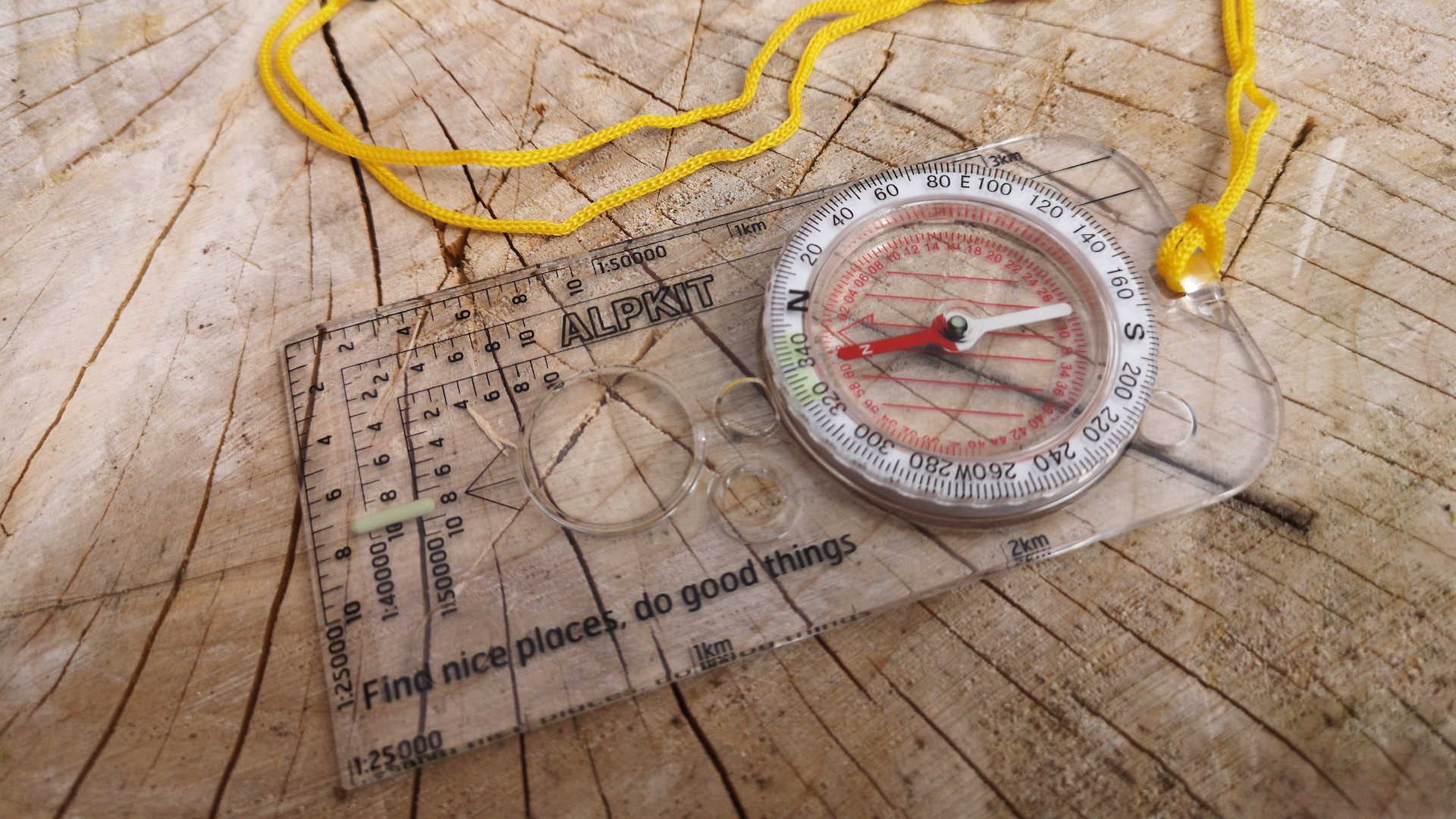Advnture Verdict
Though it isn’t flashy, this great value compass does the job brilliantly and stands up well against more established models from premium brands. Lightweight and practical, we’d happily pack this compass in our rucksack wherever we were venturing in the UK.
Pros
- +
User-friendly design
- +
Needle settles quickly
- +
Practical base plate markings with 1:20k, 1:25k and 1:50k scales
Cons
- -
Flimsy lanyard
- -
Bezel not the easiest to grip
- -
Lacks friction feet for use with a map
- -
No declination scale
You can trust Advnture
Alpkit Williams Expedition Compass: first impressions
One of Advnture's best compasses, the Alpkit Williams Expedition Compass comes from a British brand that has built a reputation for turning out high-quality, competitively-priced kit, and it doesn’t buck the trend. It’s a classic baseplate compass of the type most commonly used in conjunction with a paper map on the hills, almost identical, in fact, to the Silva Expedition Type 4.
It works really well with the most common UK maps – namely, the Ordnance Survey Explorer and Landranger series, as well as BMC and Harvey ranges of maps – since the Romers are helpfully given in 1:50k, 1:40k and 1:25k scales. These also run in both directions (eastings and northings) too. This makes it easy to give 6-figure grid references, which could be vital in an emergency situation. Learn more in how to read a map.
There are also distance markers down the sides of the baseplate in 1:50k and 1:25k scales respectively, to aid route-planning with a map. This is arguably an improvement on the mm and inches rulers of the Type 4. A circular magnifying aperture also makes it easier to read place names, contours and spot heights or discern landscape features. Discover more about the different features compasses offer in types of compass.
• RRP: £13 (UK)
• Weight: 39g / 1.38oz
• Scales: 1:25k, 1:4k, 1:5k
In the field
This compass is exactly the same size and shape as the classic Silva Type 4. As such, it sits easily in the hand. The needle is easy to read and settles reasonably quickly, since (again, like the Type 4) the housing is filled with viscous damping oil rather than liquid.
The needle itself is reflective but not lumed (though the central jewel is, presumably to help you line up the compass with the direction of travel). The upper section of the bezel is also lumed, to aid navigation in low-light conditions. The crisp, clear dial is marked in degrees, showing the four cardinal compass points plus numeric 20-degree increments, with hashing every 2 degrees. This makes it easy to read off an accurate bearing – discover more about taking a bearing in our expert guide. There are also secondary ‘mils’ markings inside the bezel (for military-style navigation), though no declination scale. Orienting lines are only marked in red, and though they are perfectly useable we slightly prefer to two-colour lines of the Type 4.
In terms of niggles, our main observation is that all the components are made of plastic, so although the bezel turns easily and smoothly, it isn’t quite as easy to grip as those with rubberised housings, especially if wearing gloves. The baseplate also scratches fairly easily and lacks friction feet to help prevent it from sliding around when placed on a map. Lastly, the cheap cord lanyard also lets the compass down a bit, though it would be easy enough to replace with some higher-quality and more durable paracord or similar.
All the latest inspiration, tips and guides to help you plan your next Advnture!
An outdoors writer and editor, Matt Jones has been testing kit in the field for nearly a decade. Having worked for both the Ramblers and the Scouts, he knows one or two things about walking and camping, and loves all things adventure, particularly long-distance backpacking, wild camping and climbing mountains – especially in Wales. He’s based in Snowdonia and last year thru-hiked the Cambrian Way, which runs for 298 miles from Cardiff to Conwy, with a total ascent of 73,700 feet – that’s nearly 2½ times the height of Everest. Follow Matt on Instagram and Twitter.


